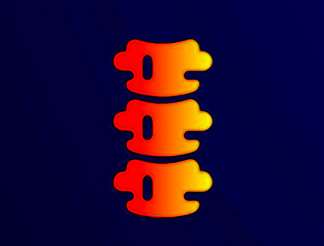Sesamoiditis | Causes and Treatment
What is sesamoiditis?
Sesamoiditis causes pain at the ball of the foot, beneath the big toe joint. Sesamoid bones are embedded in a tendon, much like the kneecap, acting to increase the leverage of the tendons that control the big toe. Due to their location and function, sesamoid bones are subjected to massive pressure and forces every time the big toe is used to push the foot forward.
What causes sesamoiditis?
Sesamoiditis develops when your sesamoid bones, the two very small bones located under the big toe joint, are irritated or injured due to overuse and repetitive impact.
Symptoms of sesamoiditis
The symptoms of sesamoiditis tend to worsen gradually. What might start as a mild ache, can quickly increase to an intense throbbing. As the severity of sesamoiditis increases, it can become difficult to put any weight on the big toe or walk comfortably. You may also notice swelling or redness around the big toe joint, and pain when trying to bend the toe upwards.
Injuries to the sesamoid bones can range from mild irritation to a fracture (or break). It’s important to seek treatment early, to help prevent the problem and pain from worsening.
Who suffers from sesamoiditis?
While anyone can develop sesamoiditis, those participating in activities that involve repetitive loading of the ball of the foot such as in dancing, sprinting or even walking, are more likely to suffer from this condition. People with prominent foot bones, higher arched feet, markedly flat feet or those who tend to run on the ball of their foot also tend to be more prone to sesamoiditis.
Sesamoiditis treatment
Sesamoiditis treatment is very specific to the person and the symptoms they’re experiencing, but usually starts with helping to settle the painful symptoms. This is done through alleviating pressure away from the sesamoid bones using padding, strapping, or orthotics, as well as using ice, oral anti-inflammatories, and temporarily stopping the activity that’s causing the pain.
From here, the goal is to help heal the damaged bones and surrounding tissues, while treating any contributing factors to help prevent sesamoiditis from coming back in the future. We often use a combination of full-length custom orthotics with supportive footwear to achieve this. The orthotic is designed in a way that deflects pressure away from the big toe joint, instead redistributing the pressure over the lesser toes at the ball of the foot. Orthotics can also help address contributing factors like flat feet(pes planus), high arched feet (pes cavus), bunions or those with reduced plantar fat padding. In the case of persistent severe sesamoiditis or stress fractures of the sesamoids, the use of a short leg pneumatic walker with rocker sole (walking cast) for 2 to 6 weeks may be required. Failing this, an injection of steroids or surgery may be considered.
Sesamoiditis surgery
In severe cases or following a true fracture of the sesamoids, surgery may be required to remove the damaged or fragmented sesamoid bone. In some cases, due to reduced blood supply, there may be delayed or absent healing and a surgical review is warranted.
Expected outcome
Most individuals will have an immediate improvement in symptoms once the pressure is removed from the sesamoids using orthotics and deflective padding. If there are no complications, complete resolution can be achieved within months.
Sesamoiditis FAQs
How long does sesamoiditis take to heal?
Sesamoiditis normally heals within a few days for mild cases with the help of resting, icing and anti-inflammatory medication. However, the healing period will differ case-by-case depending on the severity. If symptoms don’t fade within a week or two, your doctor may recommend other forms of treatment which will prolong the recovery time.
Is sesamoiditis permanent?
If sesamoiditis is triggered and untreated for a prolonged period, permanent damage can be caused in the sesamoid bones in the feet. However, if treated in the early stages, it can be managed. Often, the best treatment for sesamoiditis is resting and avoiding (or changing) the routines that trigger it (dancing, running, etc).
How do you cure sesamoiditis?
Sesamoiditis cannot be definitively cured, as there is always a risk of re-triggering it. It can be managed and prevented, though. This may require a lifestyle change, like regular resting and icing after strenuous activities, or avoiding triggering activities all-together. It is important to start treatment in the early stages to avoid permanent damage and to return to your normal lifestyle as soon as possible.
How We Can Help?
You can always BOOK ONLINE to see one of our experienced Podiatrist and Physiotherapist or simply Call Adelaide Physio And Podiatry Clinic to schedule a time that suits you.
We’ll help you find the right solution to alleviate your pain.
